How To Make One Sweet Cherry Cobbler
Cherry cobbler, a quintessential dessert of American cuisine, embodies simplicity, nostalgia, and the vibrant flavors of summer. With its juicy cherries nestled beneath a golden-brown crust, this timeless treat celebrates seasonal abundance and comforting indulgence.
At the heart of a cherry cobbler lies the star ingredient: cherries bursting with sweet-tart goodness. These ruby jewels infuse the cobbler with their luscious essence, whether freshly picked from orchards or plucked from the grocer’s shelves. Each bite offers a fruity flavor reminiscent of warm afternoons spent under the sun, picking ripe fruit straight from the tree.
The preparation of a cherry cobbler is a testament to its rustic charm. Simple yet satisfying, it requires just a handful of pantry staples—flour, sugar, and butter—transformed into a buttery biscuit-like topping that crisps up beautifully in the oven. The cherries, tossed with sugar and a hint of spice, bubble and mingle beneath this golden canopy, creating a symphony of flavors and textures.
What sets a cherry cobbler apart is its versatility. While some prefer the classic pairing of cherries with a buttery crust, others opt for variations such as oat streusel or almond topping, adding depth and complexity to this beloved dessert. Whether served warm with a scoop of vanilla ice cream or enjoyed cold the next day for breakfast, a cherry cobbler is always a crowd-pleaser, inviting friends and family to gather around the table and savor the simple joys of life.
Beyond its delectable taste, a cherry cobbler holds a special place in culinary history, rooted in the traditions of early American settlers. Originating as a practical way to use seasonal fruits and pantry staples, cobblers emerged as a humble yet beloved dessert passed down through generations. Today, they remain a cherished part of our culinary heritage, evoking memories of simpler times and the comforts of home.
For many, baking a cherry cobbler is more than just following a recipe – it’s a labor of love, a connection to the past, and a celebration of tradition. Whether baked in a cast-iron skillet or a ceramic dish, each cobbler tells a story, weaving together the flavors and memories of those who have come before us.
In a world filled with ever-evolving culinary trends and fads, the cherry cobbler is a timeless classic, a reminder that sometimes the simplest pleasures are the most satisfying. So, the next time you find yourself with a basket of fresh cherries or a craving for something sweet, consider whipping up a cherry cobbler – and indulge in a taste of tradition.
Type of Cherries
When making a cherry cobbler, the type of cherries you use can significantly impact the flavor and texture of the final dish. Here are some common types of cherries and their characteristics to help you choose:
- Sweet Cherries: These cherries, such as the Bing, Rainier, and Lambert varieties, are the most commonly used for desserts like cherry cobbler. They have a higher sugar content and a milder flavor than tart cherries. Sweet cherries lend the cobbler a rich, fruity sweetness, complementing the buttery crust.
- Tart Cherries: Also known as sour cherries, varieties like Montmorency and Morello fall into this category. Tart cherries have a bright, tangy flavor with lower sugar content, making them ideal for balancing out the sweetness in desserts. If you prefer a more intense fruit flavor and a slightly tart bite in your cobbler, tart cherries are an excellent choice.
- Dark vs. Light Cherries: Sweet cherries come in varieties of dark (like Bing) and light (like Rainier). Dark cherries typically have a deeper, more intense flavor and color, while light cherries offer a milder, sweeter taste with pale flesh. Depending on your preference for flavor and color, both types can be used in cherry cobbler.
- Frozen vs. Fresh: While fresh cherries are delightful in season, frozen cherries can be a convenient option year-round. Frozen cherries are usually picked at peak ripeness and frozen quickly, preserving their flavor and texture. When using frozen cherries in your cobbler, be sure to thaw them first and drain any excess liquid to prevent the filling from becoming too watery.
Ultimately, the choice of cherries comes down to personal preference. Opt for sweet cherries if you enjoy a sweeter cobbler with a mellow fruitiness. Tart cherries are the way to go for a more tart and tangy flavor profile. Experiment with different varieties and combinations to discover your favorite flavor balance in this beloved dessert.
Mace
Mace is a spice derived from the outer covering of the nutmeg seed (Myristica fragrans), which is a tropical evergreen tree native to Indonesia. The nutmeg fruit produces nutmeg seeds and a red, lacy membrane known as mace. After the fruit is harvested and split open, the mace is carefully removed, flattened, and dried in the sun or through artificial means.
Mace has a distinctive flavor and aroma reminiscent of nutmeg but with its own unique nuances. It is often described as warm, slightly sweet, and aromatic, with hints of pepper and citrus. Mace’s flavor profile pairs well with various sweet and savory dishes, making it a versatile spice in culinary applications.
Agave Syrup
Agave syrup is a natural sweetener derived from the sap of the agave plant, primarily the blue agave species (Agave tequilana). Indigenous to Mexico and South America, the agave plant has been used for centuries by indigenous peoples for both its sweetening properties and its role in producing alcoholic beverages such as tequila.
The process of making agave nectar involves extracting the sap or juice from the core (piña) of the agave plant, which resembles a large pineapple. The sap is then filtered, heated, and enzymatically hydrolyzed to break down complex carbohydrates into simple sugars, primarily fructose. The resulting syrup is sweeter than honey and has a mild, neutral flavor profile with hints of caramel.
Agave nectar is available in various shades, including light, amber, and dark, which refer to the degree of processing and filtration. Lighter varieties tend to have a milder flavor, while darker varieties may have a richer, more caramel-like taste.
Cherry Cobbler Recipe
Ingredients
For the Fruit
- 4 cups Bing cherries pitted
- 1 tablespoon flour
- ½ teaspoon salt
- 1 tablespoon butter
- ¼ cup Agave Almond Syrup
- ¼ cup Agaave Vanilla Syrup
- ¼ teaspoon mace or nutmeg
For the Batter
- 2 cups all purpose flour
- 1 tablespoon baking powder
- ½ teaspoon salt
- ¼ teaspoon mace or nutmeg
- 1 cup whole milk
- ⅓ cup Agasweet Almond
- ⅓ cup Agasweet Vanilla
- 2 ounces butter melted and cooled
- 2 ounces vegetable oil
For the Optional Streusel
- 4 ounces butter
- 2½ ounces sugar
- 2 ounces brown sugar
- ¼ teaspoon salt
- ¼ teaspoon cinnamon
- 6 ounces all purpose flour
- 2 ounces toasted and ground almonds
Instructions
For the Fruit
- Toss cherries with flour.
- Combine cherries and the rest of the ingredients in a sauce pan. Heat until it just comes to a boil. Turn off the heat and set aside.
For the Batter
- Whisk dry ingredients together very well. Whisk wet ingredients together. Whisk the wet into the dry until you have a relatively smooth batter.
For the Streusel
- Mix all ingredients together until crumbly.
To Assemble and Bake
- Pour the batter into the prepared pan and smooth it out. Evenly pour the fruit mixture on top of the batter, juice and all.
- Sprinkle on the optional streusel. Use as much or as little as you'd like. Any leftover streusel mix can be frozen for another time.
- Bake in the center of the pre-heated oven until the filling is bubbling and the batter is deep golden brown and set.
- Serve warm with vanilla ice cream or whipped cream.
Be sure to check out my post and recipe for peach cobbler.

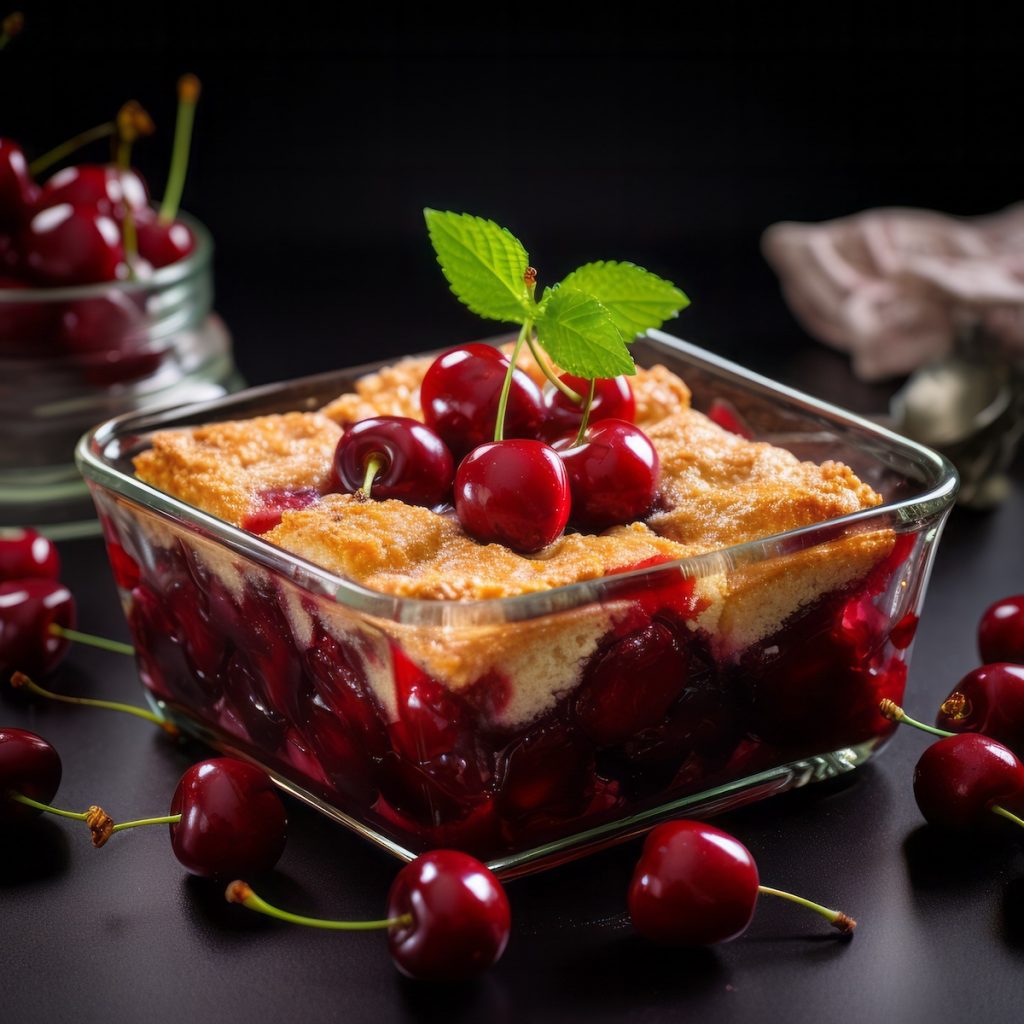
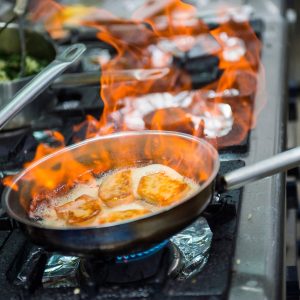
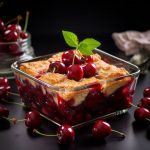

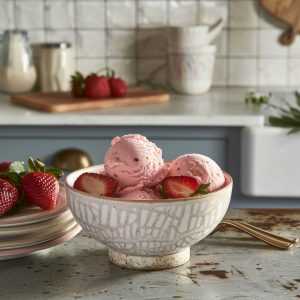
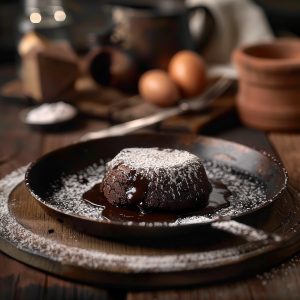
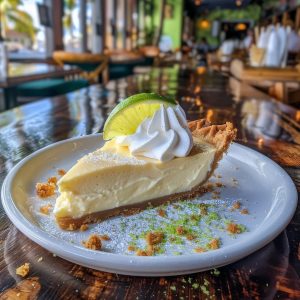

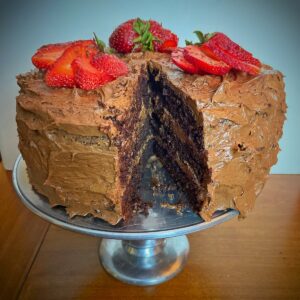
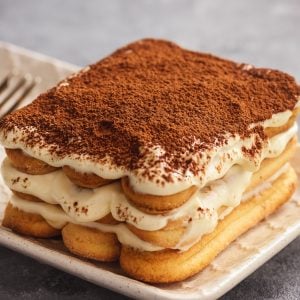
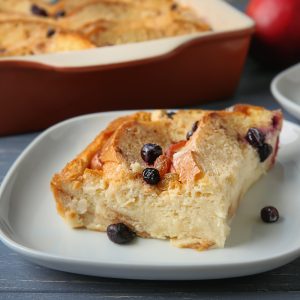


One Response
Thank you for that post!